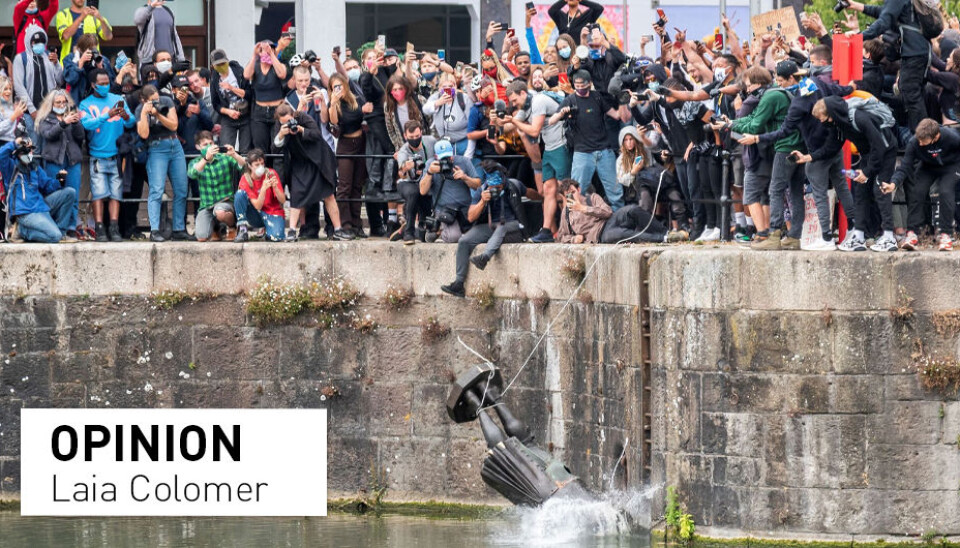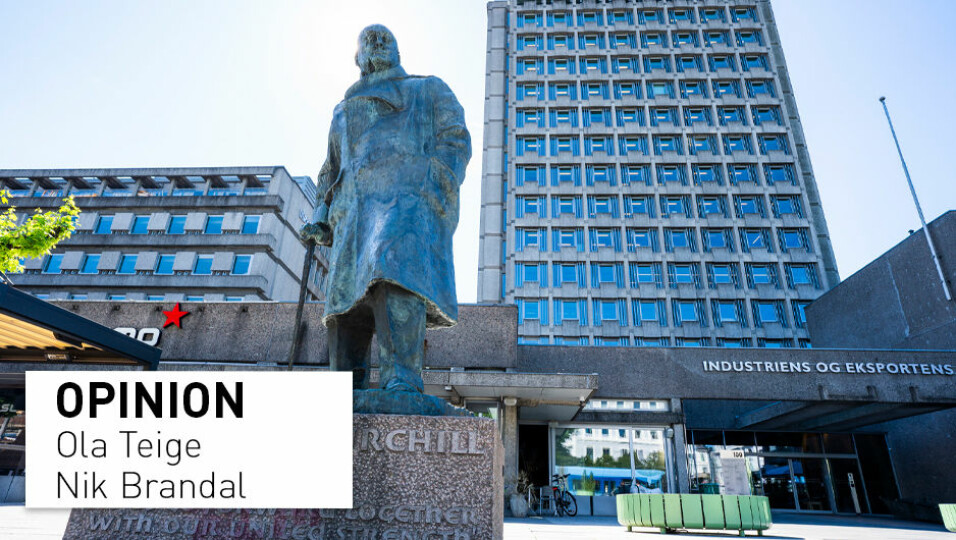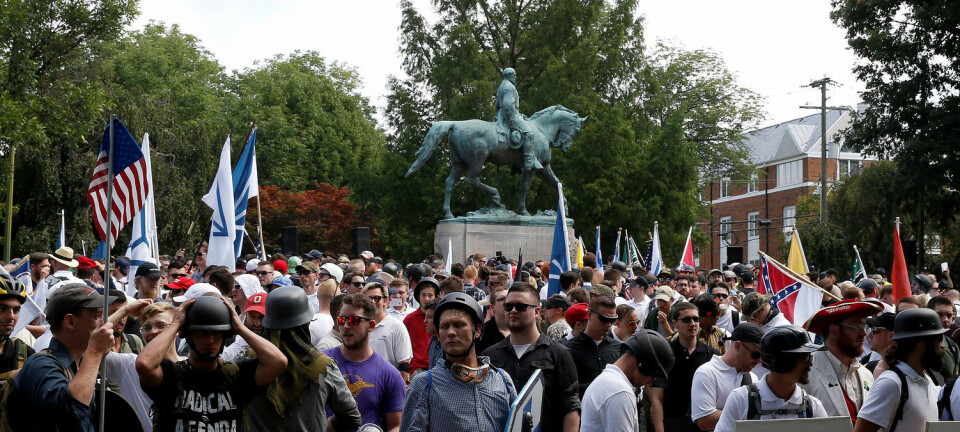Opinion:

Black Lives Matter and the archaeology of heritage commemorating bigoted white men
OPINION: White society has actively resisted critically reconsidering the significance of commemorative statues of colonialism. Rather than wait for the next statue-gate – let’s have a self-critical debate about what these statues actually represent.
The killing of George Floyd in Minneapolis by the local police has sparked mobilizations around the world against the structural and direct racial violence still present in today's societies. Monuments to King Leopold II in Belgium, and those to Edward Colston and Cecil Rhodes in the UK, have been vandalised, torn down or faced calls for their removal because of their subjects’ past as slave traders, imperialists and perpetrators of genocide. Even statues of Churchill and Gandhi have been targeted, with those involved calling them racists.
These events have opened an interesting public debate on whether it makes sense to withdraw this kind of cultural heritage that glorifies Western colonial actions and attitudes in the past. The debate has also arrived in Norway and I would like to add some further reflections.
My starting point is to consider these commemorative statues as archaeological material in themselves, as something from a distant colonial past. They are examples of how our past societies used to commemorate the achievements of wealthy white men. Our societies have instead evolved into multicultural, gender-equal, sexually diverse and democratic societies. It is wrong then to pretend that these statues still represent the values of our societies.
Acknowledging them as archaeological heritage might help white people to feel less “fragile” when discussing their ideas of racism and feeling implicated in white supremacy, and to take full responsibility for the privileged position inherited. Once this state of mind is achieved, it might be possible to step aside from the discussion of whether or not to withdraw ‘our’ heritage and imagine alternative solutions for this contemporary archaeological material.
A debate long resisted by white society
Calls for a critical re-examination of these statues of historical ‘heroes’ do not directly result from the murder of George Floyd. They have been around for decades but have been largely ignored by authorities who argue that these monuments are also part of ‘our’ history. White society has actively resisted critically reconsidering the significance of these commemorative statues and other public representations of colonialism.
Colston’s statue has been the subject of debate for years, together with several of Bristol’s streets, buildings and societies named after him, and yet local authorities and expert voices have been reluctant to qualify all his merits and drop his name.
Belittling the harm of racist heritage
I interpret past weeks’ violent attacks on colonial commemorative statues as an expression of exasperation and resentment against this white active inactivity. A furious reaction due to Floyd’s death has immediately connected people of colour with the unresolved historical trauma of slavery, and with the practices of racial segregation that still exist. It is an accumulated disenfranchised grief that regularly explodes in protests, riots, and now has taken commemorative statues as collateral targets.
Accordingly, I suggest reading Black Lives Matter reactions to statues as a reminder of white reluctance to critically revisit the still-persisting effects of past colonialism in our societies, and to understand the emotional damage that this inaction causes. Ignoring ongoing animosity to ‘racist heritage’ is also a way of belittling the harm to racialized people caused by this kind of statues and street names.
If Black Lives Matter is seen through these eyes, it is inattentive and irresponsible (if not dangerous) to label actions against these statues as ‘nonsense’ ‘brutal’, ‘wrong’ and ‘primitive’, without evaluating in equal terms the low-profile racist violence created by statues like those of Colston, Leopold II, Rhodes, and other colonial ‘heroes’ that still stand as landmarks in our multicultural cities.
Misogyny and toxic masculinity
Racism is not the only battle here. These kinds of commemorative statues are also representations of misogyny, heterosexuality and toxic masculinity.
The martial bronze statue of former US President Theodore Roosevelt on horseback and flanked by a Native American man and an African man at the entrance to New York’s American Museum of Natural History has been removed due to its racial bias and imperialist symbolism. But Roosevelt in the statue is represented according to canons of masculine culture —strong, tough, unfeeling and aggressive. Most of our historical figures benefited from structural patriarchal forms of gender discrimination, or displayed misogynist attitudes themselves, including the peace leader Mahatma Gandhi.
These are also important aspects to bear in mind when we choose who to commemorate, and how. Removing these statues could also be seen as support of a Women’s Lives Matter Too movement, for example.
Let’s be clear. I am not arguing for the toppling of colonial statues but for critically analysing the norms of whiteness and maleness present in them (and in us), rather than defensively describing the victim’s rage as violent and of nonsense, or hysterical.
The timely question is therefore what to do with this ‘archaeological material’?
Can we hide them in a museum?
Shall we remove the statues from our streets and deposit them in the oblivion of museum archives, pretending that this never happened and again silence our historical responsibilities?
This option involves two dilemmas.
First, the ethics of not accounting for and caring about the damage created in the past. Here it will be argued that we are not responsible for the actions of our ancestors. Neither can we judge our past with today’s eyes. True. But we could accept the responsibility of acknowledging both how we benefit today from these past actions, and how these past events have left open wounds in our present.
We are witnessing the effects of this neglect when we see racial, gender and sexually motivated violence, counter street riots/demonstrations, and statues beheaded. I would therefore suggest engaging with our inherited privileged position with ethical care when managing this kind of ‘archaeological material’ or creating new forms of commemorative heritage. We need to be attentive to the potential impact of these statues; to accept the responsibility of being inclusive in our heritage practice; and be responsive to the plurality of identities of the public we are addressing.
The second dilemma resulting from storing these monuments in museums might be hotly debated in the museum sector: is the hiding of unpleasant and difficult heritage the actual function of museums?
If we agree, instead, to store them in a museum-like safe place until the ‘storm’ passes, then the dilemma is only postponed: when is the right moment for these statues to be re-exhibited? Right for whom? In what context does this particular type of commemorative statue make sense? Which historical narratives are going to be chosen to explain the re-exhibition of these past ‘heroes’ carved in stone? Who will decide how these men of the past are to be remembered? Here we are only delaying our accountability in valuing these statues as cultural heritage in today’s society.
Statues probably do not teach post-colonialism
The second possible response to the situation created by the ‘war of the statues’ would be to aim to keep them in place, arguing that they help us to learn from history.
Watching the murder of George Floyd, to put us in the most dramatic scenario, one might think ‘What have we actually learnt so far that would stop this happening again?’ A counter-response to this provocative question would be to acknowledge the decrease in racial, ethnic, gender, and sexual discrimination in recent decades. And yet, let us admit it, progress in social justice and in gender and sexual equality stands alongside the continued presence of commemorative statutes like those under discussion here. In the eyes of the Black Lives Matter movement, they could even be seen as a step backwards on this path to equality.
I am not convinced that statues by themselves teach anything. Rather, they symbolize or ratify narratives of history learnt elsewhere. They are milestones to remind us of cultural and national narratives, iconographies that persist in our everyday landscapes, in our streets and in our tourist guides. If this is the case, then by keeping them in place as they are now, aren’t we symbolically sustaining the narrative of ‘our history’ at the expenses of ‘theirs’?
Giving new meaning to old statues
A third possible alternative would be to critically reinterpret these commemorative statues to include what the dark history of European colonialism means today.
To understand, for example, the connection between historical slavery and today’s structural racial and ethnic bigotry; the role of these statues in perpetuating historical and cultural traumas; to analyse the subliminal messages of toxic masculinity portrayed by these statues; and so on.
It is an exercise that could result in different heritage practices, such as artistic installations like those at Bristol’s Colston statue during the anti-slavery day in 2018, or the musealization of “graveyards” for old statues like Coronation Park in New Delhi or Grūto Parkas in Lithuania. This exercise might help to construct plural and inclusive cultural heritage for the benefit of a modern civic democracy.
I personally advocate the third option if (archaeological) heritage is to have any social value today.
———
Share your science or have an opinion in the Researchers' zone
The ScienceNorway Researchers' zone consists of opinions, blogs and popular science pieces written by researchers and scientists from or based in Norway. Want to contribute? Send us an email!









